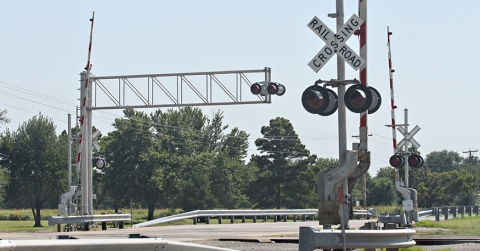
Goodbye grade crossings: new infrastructures coming with the REM
Work has begun to convert the Deux-Montagnes train line to the REM. The arrival of the REM will mean changes in the landscape. This is a closer look at one of the upcoming changes: the elimination of level crossings and the construction of viaducts.
What is a level crossing?
Transport Canada defines a grade crossing as “an intersection where a road, sidewalk, path or trail crosses railway tracks.”
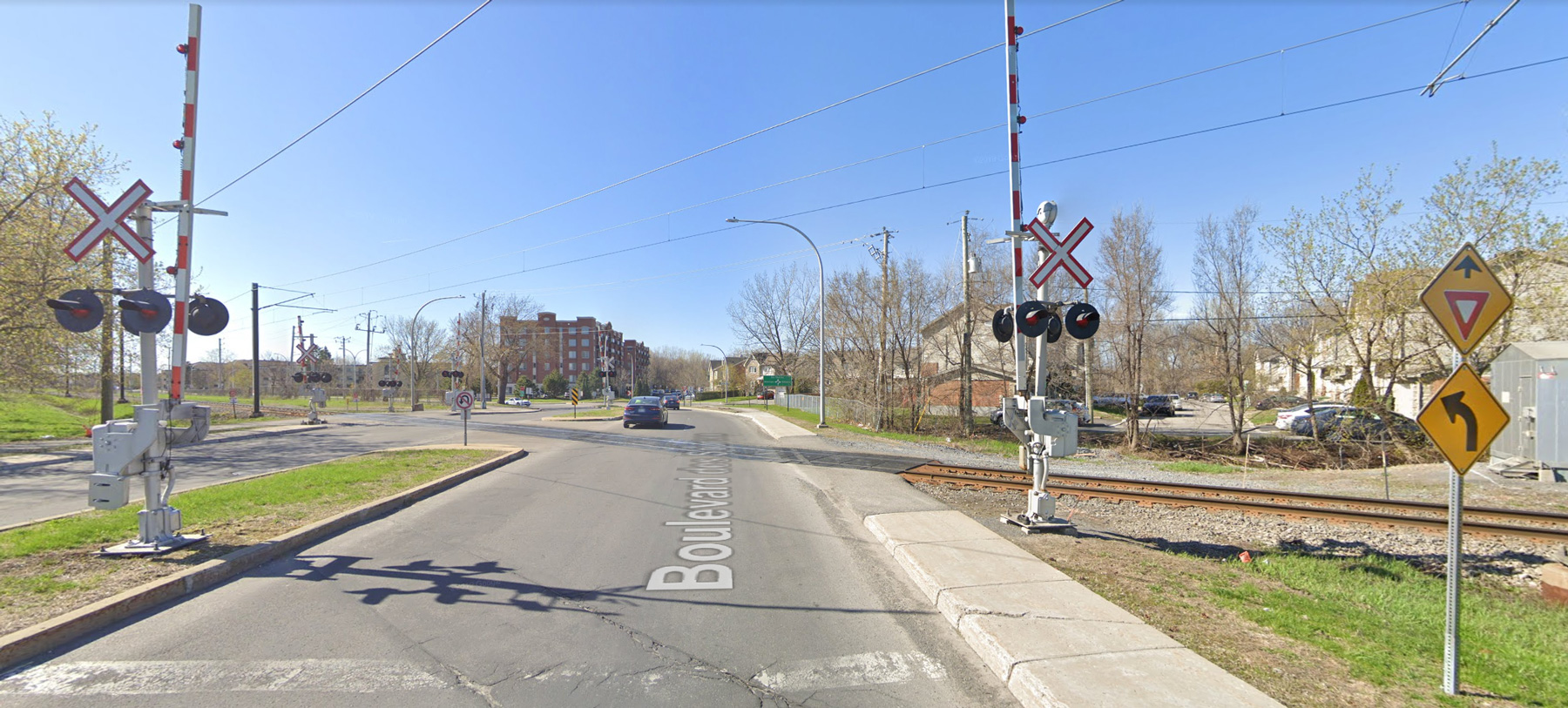 Example of a level crossing
Example of a level crossing
There are level crossings at 17 locations along the REM route, between Deux-Montagnes and Saint-Laurent. When the old train for the Deux-Montagnes line went through one of these locations, the road, pedestrian and bicycle traffic was interrupted.
What will happen to the level crossings along the old Deux-Montagnes line with the arrival of the REM?
The level crossings will cease to exist once the REM is in service. They will be replaced through the construction of nine new rail or road viaducts and a 1.6-km elevated structure in the Pierrefonds-Roxboro sector.
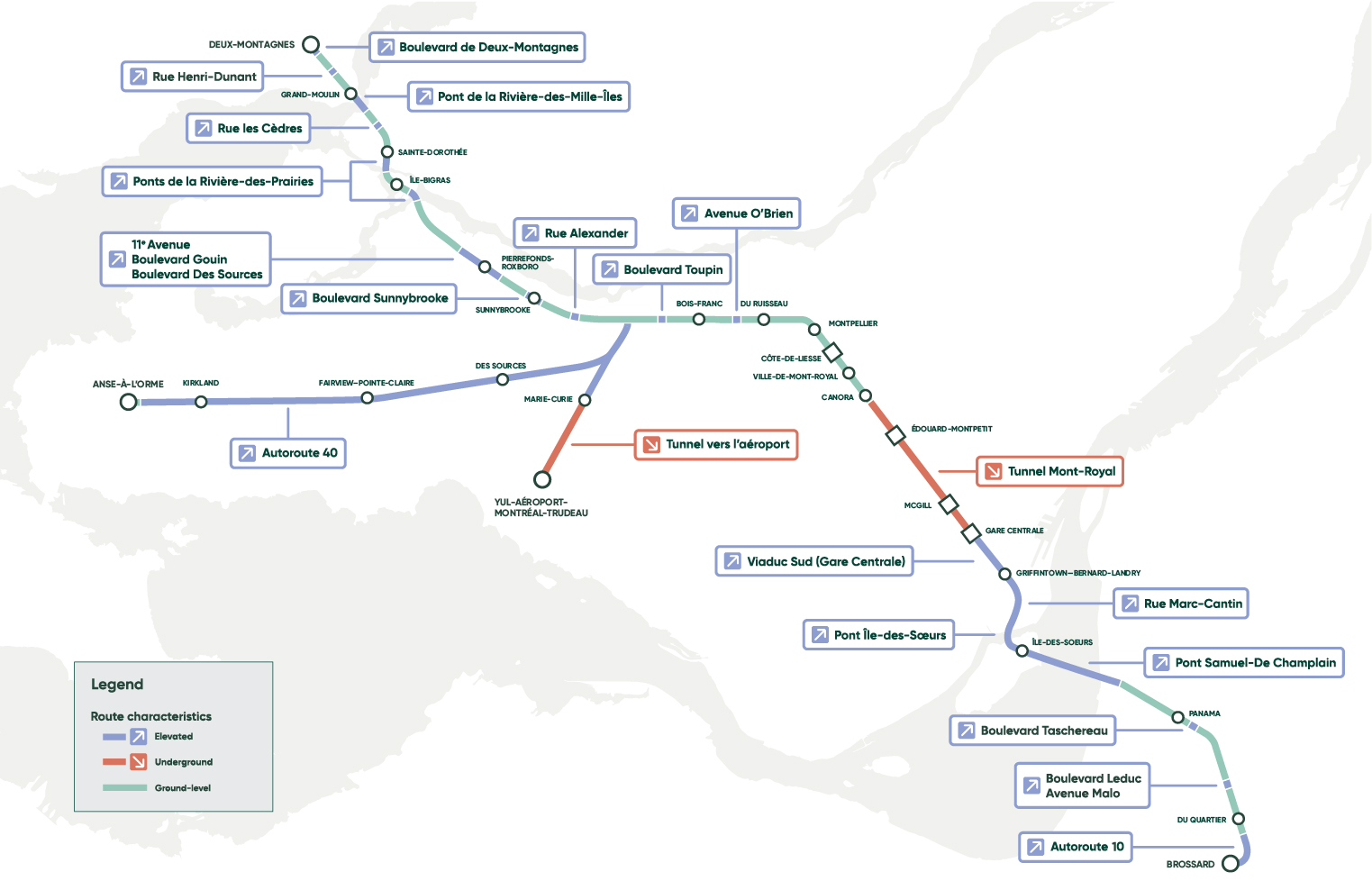 This map shows, in purple, the locations where the REM will be elevated, between the Deux-Montagnes stations and the Saint-Laurent sector.
This map shows, in purple, the locations where the REM will be elevated, between the Deux-Montagnes stations and the Saint-Laurent sector.
Why?
Because the arrival of a light rail transit system means increased service frequency. The REM will run every 2.5 minutes during peak hours on its central section (between Bois-Franc and Brossard stations) and every 5 minutes on the northern portion of the route (between Deux-Montagnes and Bois-Franc stations). The REM’s service frequency can even be increased up to 1.5 minutes! With this high service frequency, in both directions, it is impractical to think that the REM could cross roadways. Viaducts are therefore being built to allow the REM to run without interruption, for reasons of flow and above all safety.
Benefits of removing level crossings
-
Increased safety – serious accidents are avoided by eliminating crossings between rail traffic and other types of traffic (road, pedestrian, cyclist)
-
Greater travel fluidity – today’s road congestion caused by the passing of a train will no longer exist with the REM
-
Removal of alarm sounds at level crossings, signalling the arrival of a train
What will the REM’s railway viaducts look like?
The REM’s elevated structures have two lanes, one in each direction.
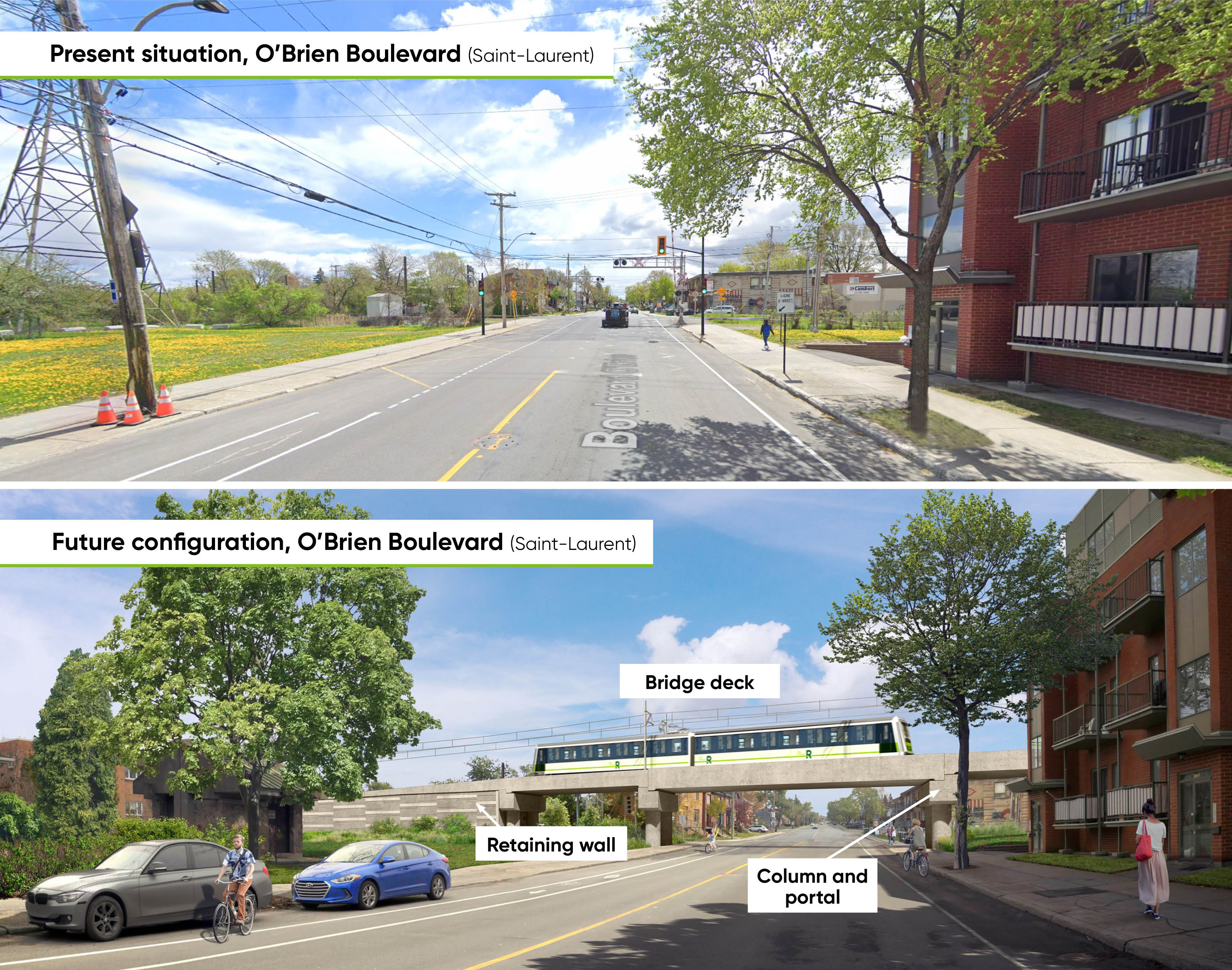
Current situation (Goggle Maps image) and projected situation at O’Brien Boulevard in Saint-Laurent. Shown at the bottom of the image are the components of the elevated structure that will be built in the sector. These same components (bridge deck, retaining wall, column and portal) are installed in all the structures where the level crossings are replaced by a viaduct.
Elevated section in the Pierrefonds-Roxboro sector
The Pierrefonds-Roxboro station is located at the centre of a 1.6-km elevated section that begins east of 11th Avenue and returns to ground level west of des Sources Boulevard. The rapid succession of three overhead structure to replace the level crossings (11th avenue, Gouin Boulevard West, des Sources Boulevard) leads us to build the network as a continuous aerial structure in this portion. This keeps the track at the same height to gain fluidity and to ensure user comfort by avoiding a “roller coaster” effect!
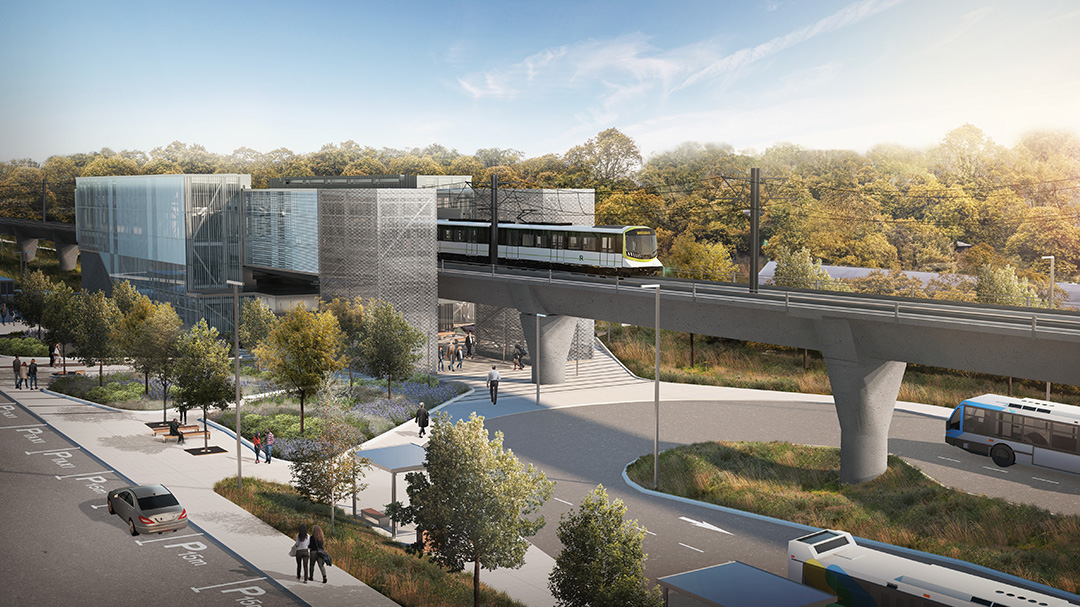 Pierrefonds-Roxboro station, integrated into the elevated structure
Pierrefonds-Roxboro station, integrated into the elevated structure
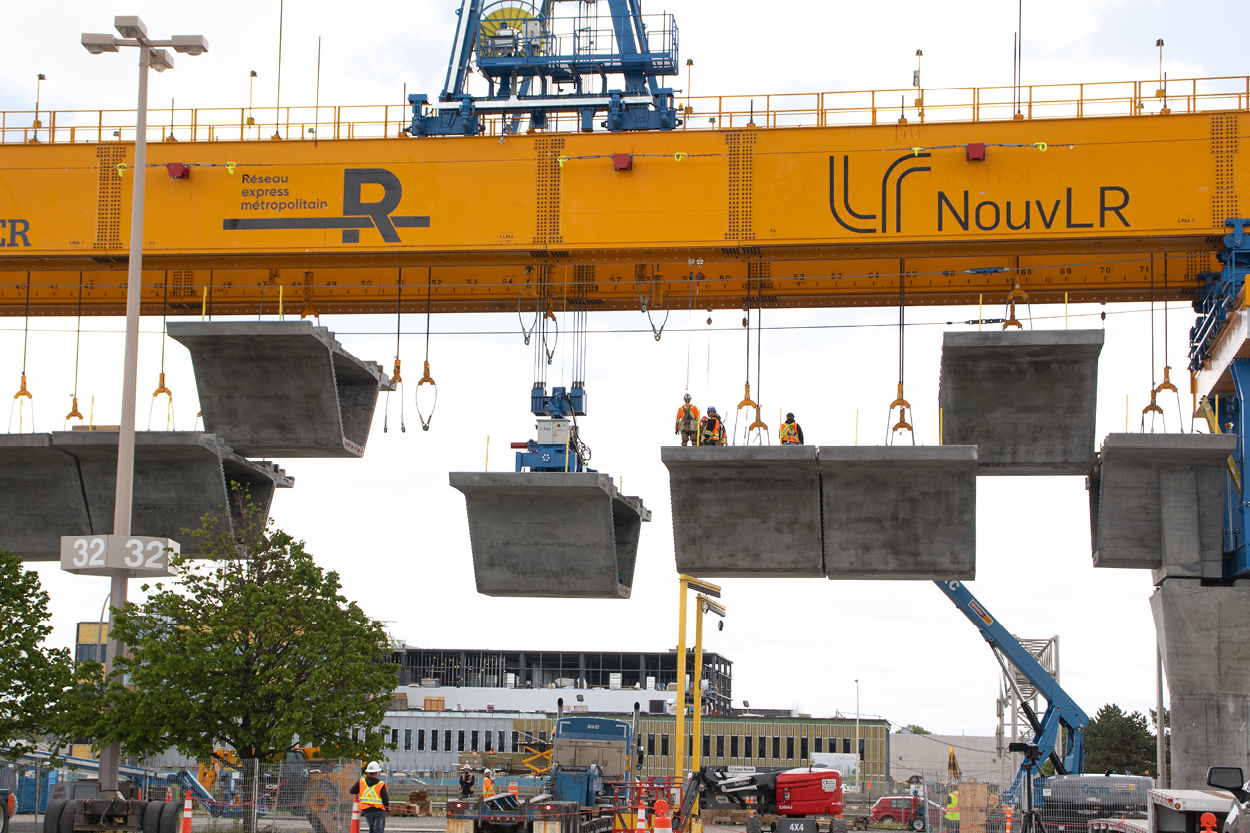 In the Pierrefonds-Roxboro sector, the launching beam method will be used to build the elevated section, as is being done along Highway 40 in the West Island. The beam will arrive in the sector in 2022.
In the Pierrefonds-Roxboro sector, the launching beam method will be used to build the elevated section, as is being done along Highway 40 in the West Island. The beam will arrive in the sector in 2022.
When will the work begin and what are the phases in the construction of the new viaducts?
Work began in certain sectors at the beginning of 2021 and will be continued over the next few months (see details below). Regardless of the sector, the main construction phases are essentially the same:
-
Relocation of public utilities
-
Construction of caisson piles
-
Construction of columns and portals
-
Construction of retaining walls and restoration of roadway
-
Bridge deck installation
-
Installation of tracks and the electrical system
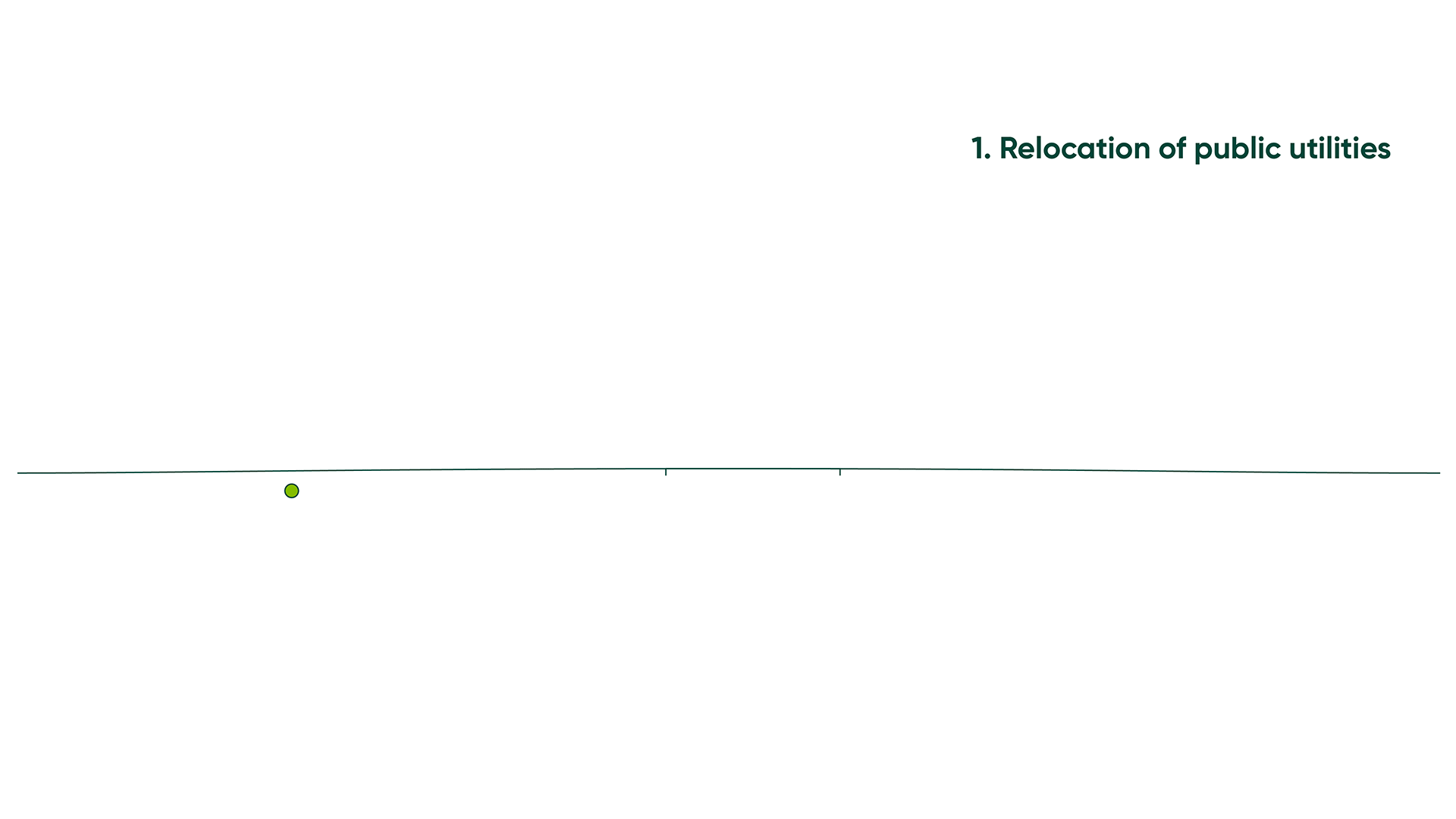 Construction phase of the elevated structures
Construction phase of the elevated structures